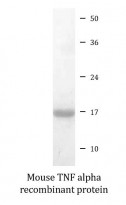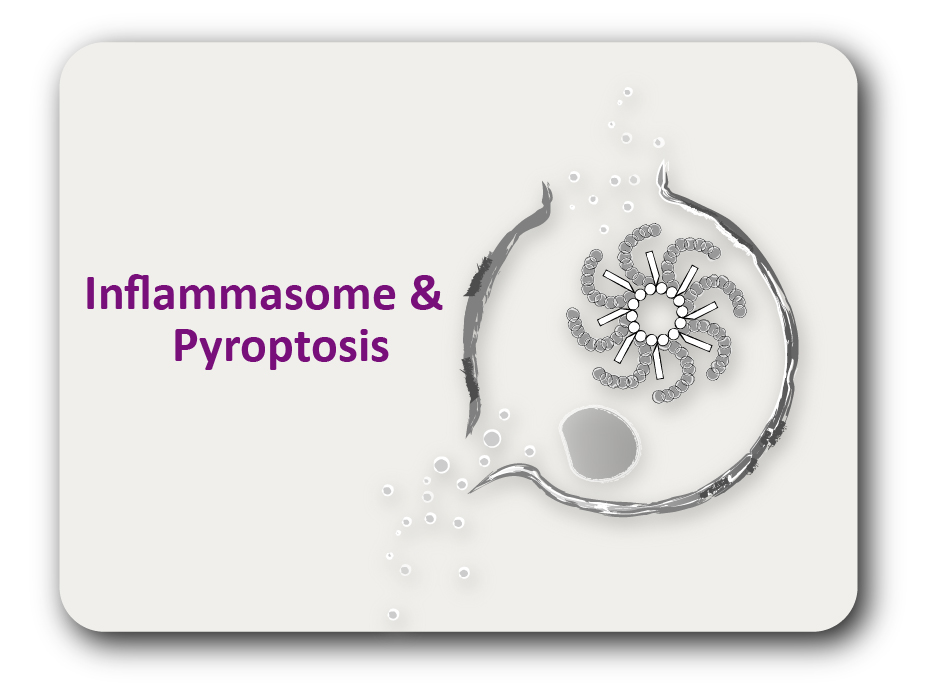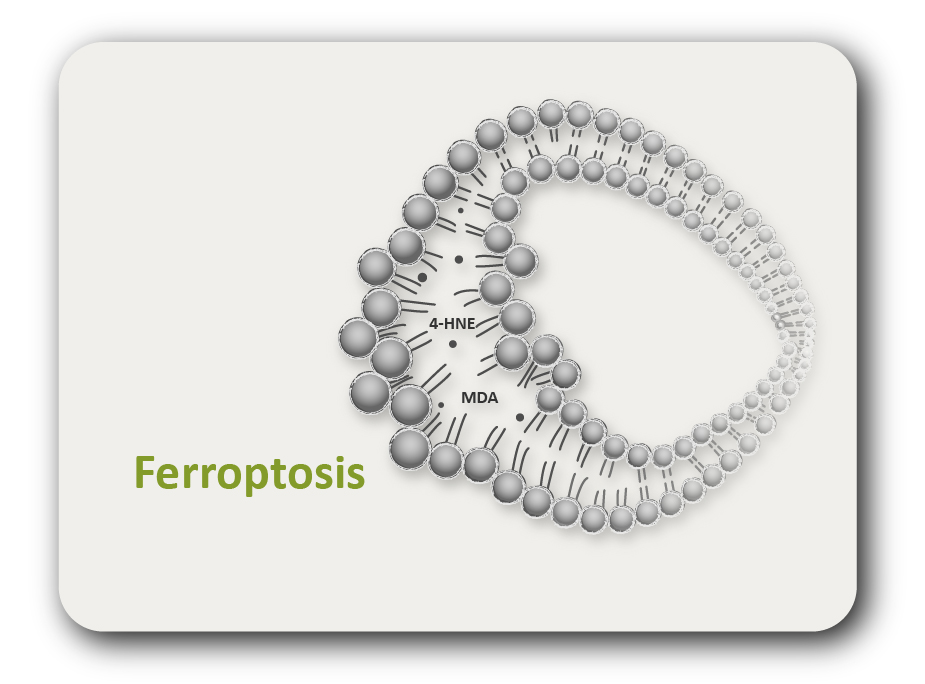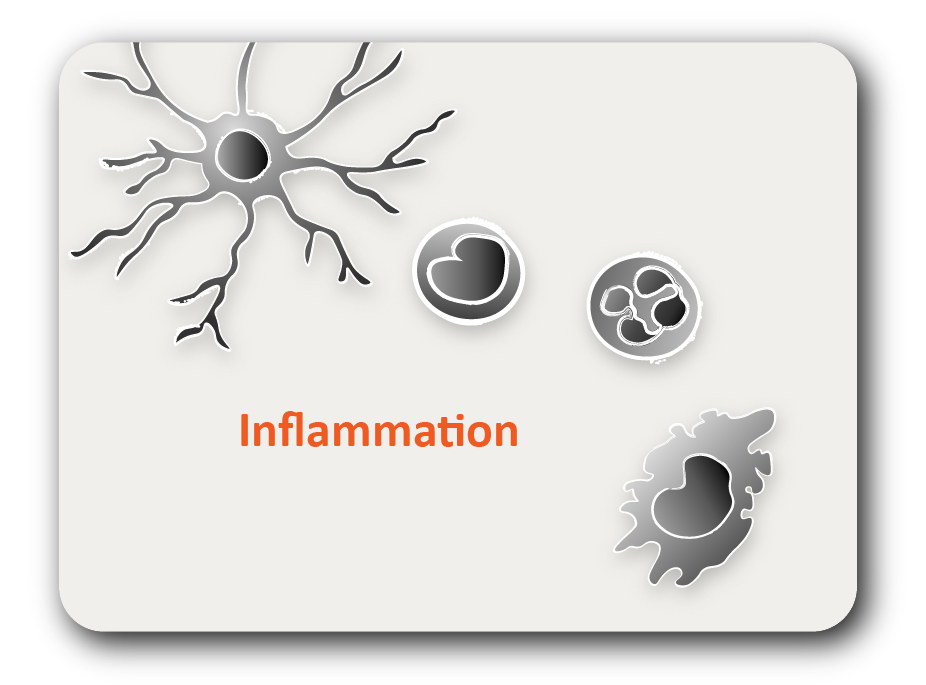ARG70041
Mouse TNF alpha recombinant protein (Active) (His-tagged, C-ter)
Mouse TNF alpha recombinant protein (Active) (His-tagged, C-ter) for SDS-PAGE
概述
| 产品描述 | E. coli expressed, His-tagged (C-ter) Active Mouse TNF alpha recombinant protein |
|---|---|
| 应用 | SDS-PAGE |
| 靶点名称 | TNF alpha |
| 物种 | Mouse |
| A.A. 序列 | Leu80 - Leu235 |
| 表达系统 | E. coli |
| 生物活性 | Active |
| 活性说明 | Determined by its ability to induce cytotoxicity in L929 cells in the presence of actinomycin D. The ED50 for this effect is less than 40 pg/mL. The specific activity of recombinant mouse TNF alpha is approximately > 2.5x 10^7 IU/mg. |
| 別名 | Tumor necrosis factor ligand superfamily member 2; DIF; Cachectin; ICD2; ICD1; N-terminal fragment; TNF-a; TNFA; TNFSF2; TNF-alpha; Tumor necrosis factor; NTF |
属性
| 形式 | Powder |
|---|---|
| 纯化说明 | Endotoxin level is<0.1 EU/µg of the protein, as determined by the LAL test. |
| 纯度 | > 98% (by SDS-PAGE) |
| 缓冲液 | PBS (pH 8.0) |
| 复溶 | It is recommended to reconstitute the lyophilized protein in sterile water to a concentration not less than 200 μg/mL and incubate the stock solution for at least 20 min at room temperature to make sure the protein is dissolved completely. |
| 存放说明 | For long term, lyophilized protein should be stored at -20°C or -80°C. After reconstitution, aliquot and store at -20°C or -80°C for up to one month. Storage in frost free freezers is not recommended. Avoid repeated freeze/thaw cycles. Suggest spin the vial prior to opening. |
| 注意事项 | For laboratory research only, not for drug, diagnostic or other use. |
生物信息
| 基因名称 | TNF |
|---|---|
| 全名 | tumor necrosis factor |
| 背景介绍 | This gene encodes a multifunctional proinflammatory cytokine that belongs to the tumor necrosis factor (TNF) superfamily. This cytokine is mainly secreted by macrophages. It can bind to, and thus functions through its receptors TNFRSF1A/TNFR1 and TNFRSF1B/TNFBR. This cytokine is involved in the regulation of a wide spectrum of biological processes including cell proliferation, differentiation, apoptosis, lipid metabolism, and coagulation. This cytokine has been implicated in a variety of diseases, including autoimmune diseases, insulin resistance, and cancer. Knockout studies in mice also suggested the neuroprotective function of this cytokine. [provided by RefSeq, Jul 2008] |
| 生物功能 | Cytokine that binds to TNFRSF1A/TNFR1 and TNFRSF1B/TNFBR. It is mainly secreted by macrophages and can induce cell death of certain tumor cell lines. It is potent pyrogen causing fever by direct action or by stimulation of interleukin-1 secretion and is implicated in the induction of cachexia, Under certain conditions it can stimulate cell proliferation and induce cell differentiation. Impairs regulatory T-cells (Treg) function in individuals with rheumatoid arthritis via FOXP3 dephosphorylation. Upregulates the expression of protein phosphatase 1 (PP1), which dephosphorylates the key 'Ser-418' residue of FOXP3, thereby inactivating FOXP3 and rendering Treg cells functionally defective. Key mediator of cell death in the anticancer action of BCG-stimulated neutrophils in combination with DIABLO/SMAC mimetic in the RT4v6 bladder cancer cell line. The TNF intracellular domain (ICD) form induces IL12 production in dendritic cells. [UniProt] |
| 细胞定位 | Cell membrane; Single-pass type II membrane protein. Tumor necrosis factor, membrane form: Membrane; Single-pass type II membrane protein. Tumor necrosis factor, soluble form: Secreted. C-domain 1: Secreted. C-domain 2: Secreted. [UniProt] |
| 产品亮点 | Related products: TNF alpha antibodies;TNF alpha ELISA Kits;TNF alpha Duos / Panels;TNF alpha recombinant proteins; Related news: HMGB1 in inflammation Inflammatory Cytokines |
| 翻译后修饰 | The soluble form derives from the membrane form by proteolytic processing. The membrane-bound form is further proteolytically processed by SPPL2A or SPPL2B through regulated intramembrane proteolysis producing TNF intracellular domains (ICD1 and ICD2) released in the cytosol and TNF C-domain 1 and C-domain 2 secreted into the extracellular space. The membrane form, but not the soluble form, is phosphorylated on serine residues. Dephosphorylation of the membrane form occurs by binding to soluble TNFRSF1A/TNFR1. O-glycosylated; glycans contain galactose, N-acetylgalactosamine and N-acetylneuraminic acid. [UniProt] |
检测图片 (1) Click the Picture to Zoom In






